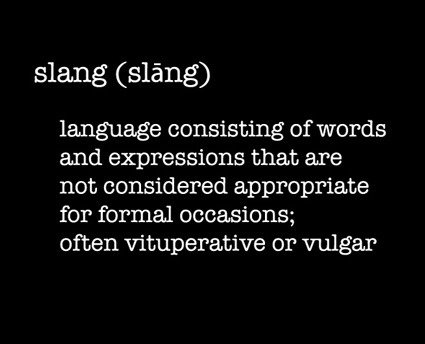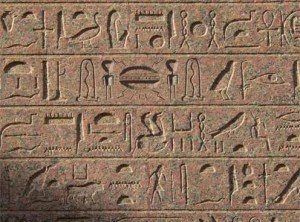
Slang, code, and abbreviations: linguistic shorthand which can make speakers (and writers) incomprehensible to those outside their own group. To civilians who may have been puzzled by the wildlife crowd’s tossed-off references to peefas, modos or mice cubes, here is a beginner’s guide to Rehabberspeak.
BIRD ID
Just when wildlife rehabilitators have made it through the summer, dealt with fall migration, repaired whatever’s been broken during the chaos, and are just about to try to relax … noooooo. That’s when the state and feds demand that we fill out complicated forms detailing every bird we’ve taken in during the year, supposedly using the North American Ornithological Society’s abbreviation for each species.
Some abbreviations roll off your tongue and are thus quite helpful – Mourning Doves are MODOs, Peregrine Falcons are PEFAs, Mississippi Kites are MIKIs. So if you’re really busy, instead of slamming down the phone and growling, “This is the fourth fledgling Mourning Dove this week,” you can simply say, “Incoming modo.”
Some abbreviations are not helpful, however, such as SSHA (Sharp-shinned Hawk) or GRPC (Greater Prairie Chicken) or UEFL (Unidentified Empidonax Flycatcher). I’d never actually looked at the North American Ornithological Society’s abbreviation list before writing this, so I had a great time scanning it and imagining rehabbers calling each other up and asking, “Say, have you got any HAWRs in your house?” (Sorry, that was gratuitous – HAWRs are Happy Wrens, and they live in Mexico.)
Moving on.
So rehabbers make up our own names, usually just shortened versions of the names themselves: “Hoodies” for Hooded Crows, “Wedgies” for Wedge-tailed Shearwaters, “Waxies” for Cedar Waxwings, “Bluebies” for various Bluebirds. But sometimes we personalize them, and since birds are clearly not all the same, one rehabber’s “sweetiebirds” may be another’s “those sonsabit%*#s.”
Veronica Bowers calls Cliff Swallows “Chirpies,” Shirah Gantman’s nestling Rock Doves are “Squeakers,” European Starlings are “Hawk Food” to Laura Culley, and all woodpeckers are “Peckers” to Nancy Barbachano, who rehabs them in the Pecker Palace (see Happy Wrens). Maureen Eiger categorizes any unidentifiable featherless nestlings as “Tufted Puffins;” to Letitia Labbie, they’re “Eggs With Legs.”
INTAKE
Upon arrival, each bird receives a chart, which is soon filled with hieroglyphics.
Hit by car, HBC; caught by cat, CBC; window strike, WS. Vann Masvidal once described an incoming aquatic bird as O/S O/N W/O H/O (outside overnight without haulout). Kathy Hare Hershey uses MBC mostly for baby bunnies, but it works for birds as well: manhandled by children.
There’s the popular JAR: just ain’t right. And the more ominous ART: approaching room temperature, which means all hands on deck.
I once went through a short illustration phase. I took in a Warrior Queen Red-tailed Hawk hit by car (WQ RTHA HBC) who awed me with her strength and ferocity, but irritated me with her habit of trying to kill me every time I opened her crate. I eventually filled the margins of her chart with miniature drawings of knives, handguns, and Wile E. Coyote bombs with sizzling wicks, so even at my sleepiest one glance at her chart would snap me into “en garde.”
BAR is a standard rehabber term for bright, alert, and responsive. Louise Shimmel goes two better: BARF (bright, alert, responsive, and feisty) and BARP (bright, alert, responsive, and perching). Michele Wellard codes NN (naked nestling) FN (feathered nestling) and FL (fledgling); Jodi Swensen dispenses with the particulars and labels them BB (baby). Jodi’s BB is not to be confused with Tracy Anderson’s BB, which can mean either barfy bast#*% (usually a vulture) or bitey bast#*% (could be anything).
FINDER CODES
These are always included on the patient’s chart. Some Good Samaritans truly are inspirational people; occasionally the margin next to one of my finders’ names would be dotted with hearts and stars and smiley faces. But then, there are the others.
“I always use proper names for those who enrage me so the gods are better able to identify them when delivering the curses I’ve asked for,” says Monte Merrick. “That includes flat flies.”
Linda Hufford has an easy system: CF (concerned finder – do a follow up); JF (jerk finder – don’t bother with a follow up); DF (donated finder – send thank you note); and AF (a*%#ole finder, who deliberately caused injury and will take no action to stop further calamity).
FOOD
Raptor rehabbers feed our patients mostly thawed mice which, when frozen, are called either “mice cubes” or “mousesicles.” We give young or compromised birds “pinkies,” which are just-born mice that are easy to digest. Lisa Acton’s husband Joe calls them “bonbons.”
BFRS
This is one of the many terms used by rehabbers at the end of a long, exhausting summer; Deborah Donelson calls it Brain-Fried Rehabber Syndrome. It’s when you’ve had too many every-20-minute feedings, too many 11 PM calls from the next county, and too many run-ins with uncooperative members of the public. Fried rehabbers become emotional in ways that make perfect sense to us, but not necessarily to anyone else.
Here’s an example. Donna Osburn had a full house, including a demanding recuperating Northern Flicker who was eating about 500 mealworms a day. On top of all her other chores, Donna had to swing by the vet (yet again) to pick up medicine for him. The vet tech had placed the syringe, the meds, and a dosing reminder in a plastic package and written FLICKER in capital letters on the label.
“Read it with your eyes squinted a little, and you’ll know why I walked away crying with laughter,” says Donna.
Why is there a photo of Captain Kirk on a bird blog? Because it’s the end of August and TFAPC (Time For A Pina Colada).




![483121746_8303c4b41b[1]](http://10000birds.com/wp-content/uploads/483121746_8303c4b41b1-300x225.jpg)











I’ve found that many birding groups, even groups of friends, have their own names for birds (Hoodies are Hooded Mergansers in my neck of the woods), but I’m fascinated to learn the more specialized lingo of rehabbers. I love BARF, I think it has uses beyond incoming birds!
BARF cracks me up, too – I think you’ve hit on another great blog topic, Donna – the same names meaning different things around different parts of the world. I’ll put it on the list!
I think all books on slang need to be updated immediately!